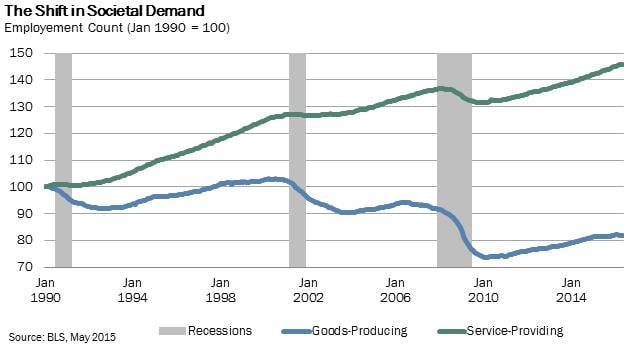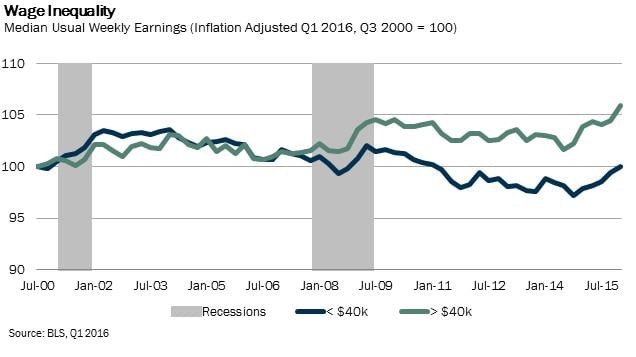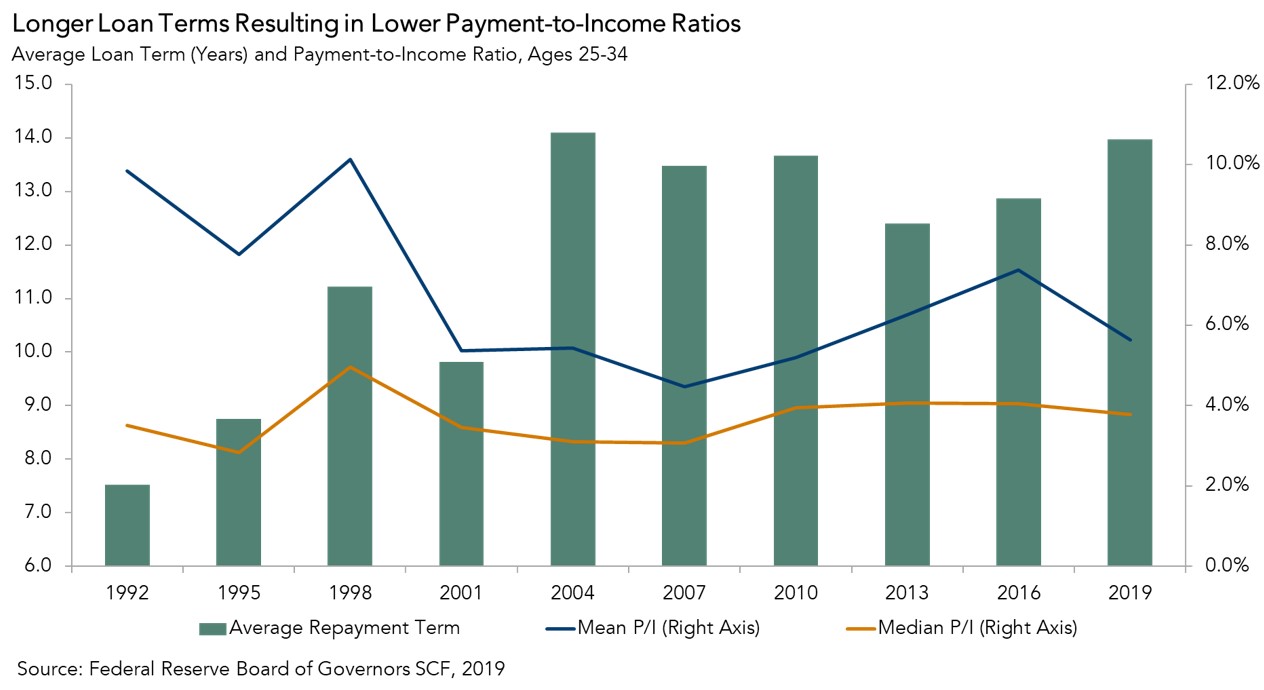Success achieving the American Dream of homeownership is, in large part, dependent on the ability to earn a good income. For much of the last century, a job in manufacturing provided a stable and solid income. In fact, after World War II, the United States was the manufacturer to the world, as America’s post-war economic boom changed the way we worked, where we lived and our ability to own a piece of the American Dream.
Now, just as the Industrial Revolution transformed the way we worked at the turn of the 20th century, the “information revolution” is profoundly re-shaping the labor force today and has significant implications for homeownership in the future. Over the last three decades, advancements in information technology and the Internet have transformed work and created a polarized work force. There are those with the advanced skills necessary to innovate and create in the new economy, and there are those in the service sector worried about their jobs being automated away. Robot makers and wage takers. As a result, the owners of capital are capturing an increasing share of wealth and income, and real household income has stagnated. As the shift toward capital and away from labor continues, inequality among the employed increases and a clear divide has emerged between the income-earning potential of high-skilled and low-skilled labor.
"The days when a high school education was sufficient to earn enough income to support a family have largely passed. Now, much more is required. In fact, access to education may be one of the most defining issues we face in the new “automation economy.”
Since the early 2000s, employment among the goods-producing sectors has slowly declined, and is currently 20 percent lower than it was in 2000 (Figure 1). The number of manufacturing jobs has declined as investments in automation and robotics have replaced many of the routine and basic tasks performed before by workers. Tasks that were once manually completed by workers are easily automated due to their highly repetitive and simplistic natures. Meanwhile, employment among the service sectors has steadily increased since 1990. There are almost 50 percent more service sector jobs today than a quarter century ago (Figure 1). The majority of occupations within the service sector are difficult to automate or outsource to non-domestic labor because they require personal interaction, critical thinking and educated labor.
Figure 1

In order to understand wage trends for high-skilled and low-skilled jobs, using earnings as proxy for skill level, we have split the labor market into jobs earning more than $40,000 a year (high-skilled) and those earning less than $40,000 a year (low-skilled). By segmenting the labor market in this way, we can see that employment among low-skilled occupations is down 7 percent since 2000 (Figure 2). Additionally, the inflation-adjusted, median usual weekly earnings of low-skilled earners have not changed since 2000, yet the cost of living keeps rising (Figure 3). In contrast, high-skilled employment has increased 20 percent since the beginning of the millennium (Figure 2) and the inflation-adjusted, median weekly earnings have increased 6 percent (Figure 3).
Figure 2

Figure 3

As the technology and automation boom continues, an increasing number of jobs will be created for high-earning educated workers. If we know the high-skilled segment of the labor market will continue to grow, the question becomes, how do we help all Americans access the education needed for success in this world of automation? The days when a high school education was sufficient to earn enough income to support a family have largely passed. Now, much more is required. In fact, access to education may be one of the most defining issues we face in the new “automation economy.” Homeownership in America will depend on how well we address this issue.



